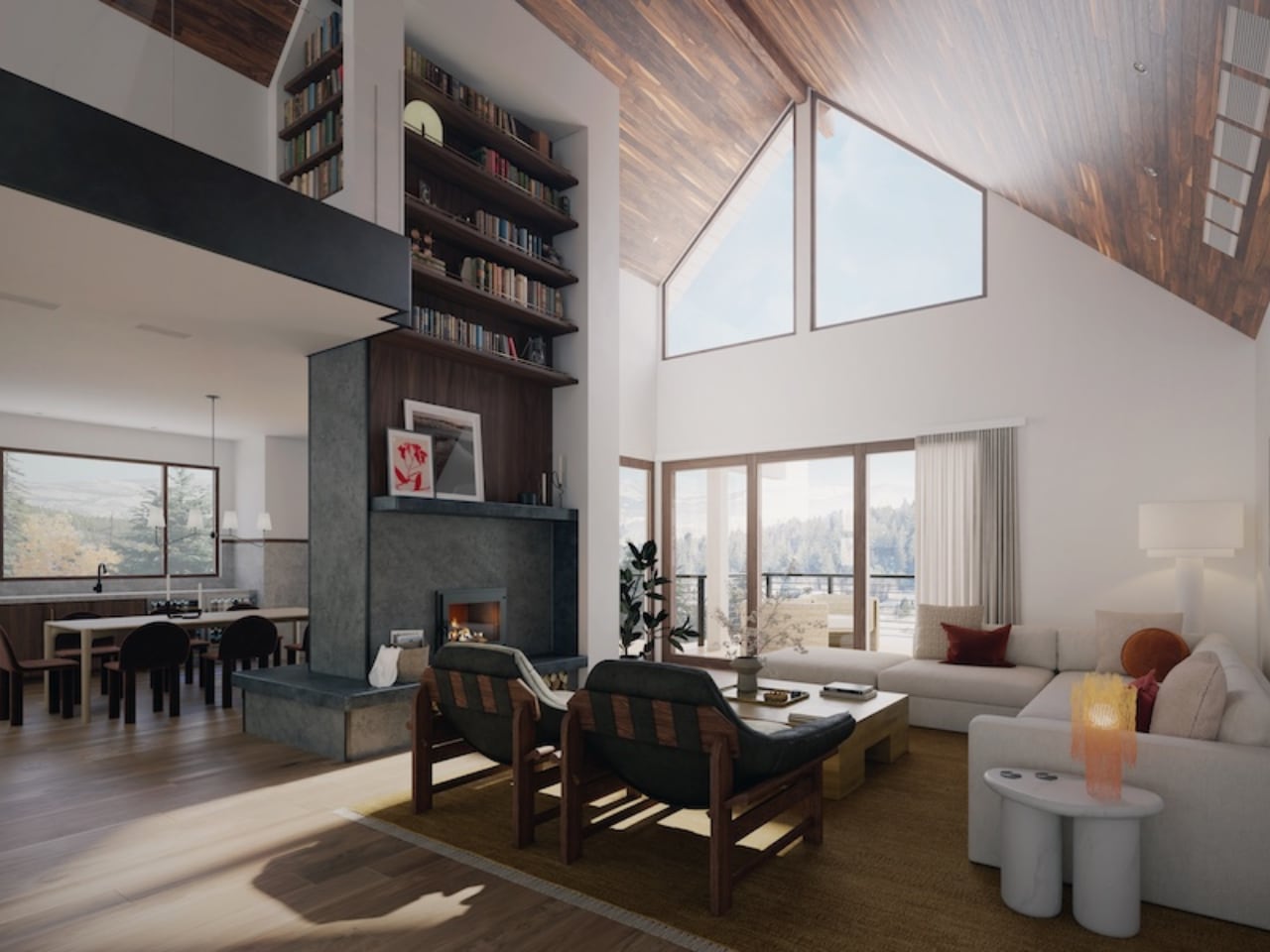
The concept of residential hospitality just shifted dramatically in downtown Truckee, California. Guesthouse Lake Tahoe launched this spring as something entirely different. Located at 10403 High Street, this nearly 4,000-square-foot property represents the first flagship location for Guesthouse, a members-only collection of rental homes that prioritizes design innovation as much as white-glove service. What happens when you combine Ryan Group Architects’ spatial mastery with an eclectic team of interior designers led by Halfdan Pedersen in the Sierra Nevada mountains? The result challenges everything we thought we knew about luxury mountain retreats, creating a new category of hospitality that feels more like discovering a meticulously curated private residence than checking into any traditional accommodation. This project demonstrates how collaborative design can completely reimagine what premium group travel means in 2025.
Designer: Ryan Group Architects + Halfdan Pedersen
Why This Design Team Collaboration Actually Works
Ryan Group Architects approached this project with a philosophy that mountain architecture doesn’t have to choose between authenticity and innovation. Their design for Guesthouse Lake Tahoe establishes what they call a “timeless sensibility” that respects Truckee’s historic character while introducing contemporary spatial concepts that feel both familiar and surprising.
The interior design represents a fascinating collaboration between multiple creative voices, with Halfdan Pedersen leading the charge alongside Olympia Pearl of Olympia Pearl Design and Sally Lyons of Blue Skies 3D, while the Michael Hsu Office Of Architecture curated all furniture and art selections. Pedersen, known for designing soulful and eclectic hotels, restaurants, shops, and residences across the United States and Iceland, pulled inspiration directly from Truckee’s historic origins and stunning mountain scenery to create what he describes as a “laidback second-home atmosphere that allows the views to take center stage.” The design language reads as both sophisticated and approachable, using traditional mountain house proportions but reimagining how those spaces connect and flow together. Rather than overwhelming guests with rustic mountain clichés, the interiors create a refined backdrop that enhances the natural beauty visible through floor-to-ceiling windows. Tall ceilings amplify the sense of space while cozy, nature-inspired elements help bring the outdoors inside, resulting in an authentic “Old World meets New World” design aesthetic that celebrates rather than competes with its Truckee-Tahoe environment.
How 4,000 Square Feet Becomes Something Much Bigger
The spatial experience unfolds across what sources describe as either 4,000 or 4,500 square feet, depending on how you measure the extensive outdoor areas. Four bedrooms include three king-sized suites, with 5.5 bathrooms distributed throughout the residence to ensure privacy even when accommodating the full capacity of 10 guests.

Renderings courtesy of Nephew
What makes this layout exceptional goes far beyond simple square footage calculations. The central great room features a wraparound fireplace that serves as both an architectural focal point and a functional gathering space, seamlessly connecting to a dining room and an open-concept kitchen designed to support everything from intimate family meals to professional chef preparations. An upstairs loft provides the perfect breakaway space for smaller group conversations or work sessions, while a media room offers flexibility for screening films, holding business presentations, or collaborative brainstorming sessions. The fully finished flex garage space includes its own kitchenette and mountain views, essentially functioning as an additional living area that can adapt to whatever groups need most. These aren’t afterthought spaces but carefully planned zones that recognize how modern travelers actually use vacation properties, offering flexibility that traditional hotel layouts simply cannot match.
The outdoor experience deserves equal attention to the interior design achievements. Three expansive decks create multiple zones for various activities throughout the day, from morning coffee rituals to evening gatherings around the dedicated fire pit, complete with built-in seating. The property even includes a hitching post where guests can tie up horses before or after rides, acknowledging Truckee’s authentic mountain culture rather than sanitizing it for urban sensibilities. This attention to authentic details extends the usable space well beyond the interior square footage while maintaining the residential character that sets Guesthouse Lake Tahoe apart from conventional luxury accommodations.
Where Hospitality Services Meet Invisible Technology
The integration of hospitality services directly influenced every architectural and design decision throughout the property. Spaces were planned specifically to accommodate a private chef, 24/7 house captain, private driver, and local guide without these services feeling intrusive to guests or disrupting the residential character that makes the experience feel genuinely homelike rather than institutional.
Technology integration remains invisible yet comprehensive, supporting the level of service expected by members while ensuring that sophisticated climate control, lighting, and entertainment systems work flawlessly without drawing attention to their presence. The design team understood that luxury today means having complex systems that respond intuitively to guest needs without requiring technical expertise to operate. The members-only model allowed this collaborative design team to make bolder choices than traditional hospitality projects typically permit, resulting in a level of customization and attention to detail that elevates the entire experience beyond what conventional vacation rentals offer. Without needing to appeal to the broadest possible market, the architects and designers could create something more specific and refined, incorporating technology solutions that support rather than dominate the living experience.
The Truckee Location Advantage and What Comes Next
Truckee’s location provides the perfect context for this architectural experiment, offering authentic mountain character that serves as a counterpoint to the more commercialized resort areas around Lake Tahoe. Downtown Truckee maintains its historic charm while embracing thoughtful development that respects the natural environment. Guesthouse Lake Tahoe sits just one mile from Truckee-Tahoe Airport, offering easy access to seven world-class ski resorts within a 45-minute drive.
The neighboring Titus House adds another layer to the Guesthouse Lake Tahoe experience, creating a compound approach that will soon include Guesthouse Pantry, an artisanal bakery and cafe opening to the public in late 2025. This multi-building strategy reflects a more nuanced understanding of how groups actually use vacation properties, offering additional privacy options and community connections that single-structure designs cannot provide. The success of this approach suggests that discerning travelers increasingly value authentic design experiences over generic luxury amenities, prioritizing spaces that feel genuinely curated rather than commercially optimized.
Guesthouse Lake Tahoe represents more than just another luxury rental property entering an increasingly crowded market. The project demonstrates how thoughtful architecture and collaborative interior design can create entirely new categories of hospitality experience, proving that residential hospitality can offer something that traditional hotels simply cannot deliver. By combining Ryan Group Architects’ spatial expertise with Halfdan Pedersen’s design leadership and the creative contributions of Olympia Pearl, Sally Lyons, and the Michael Hsu Office Of Architecture, this project has created a template that other mountain destinations will undoubtedly study and attempt to replicate, though the specific magic of this collaboration may prove difficult to duplicate.






